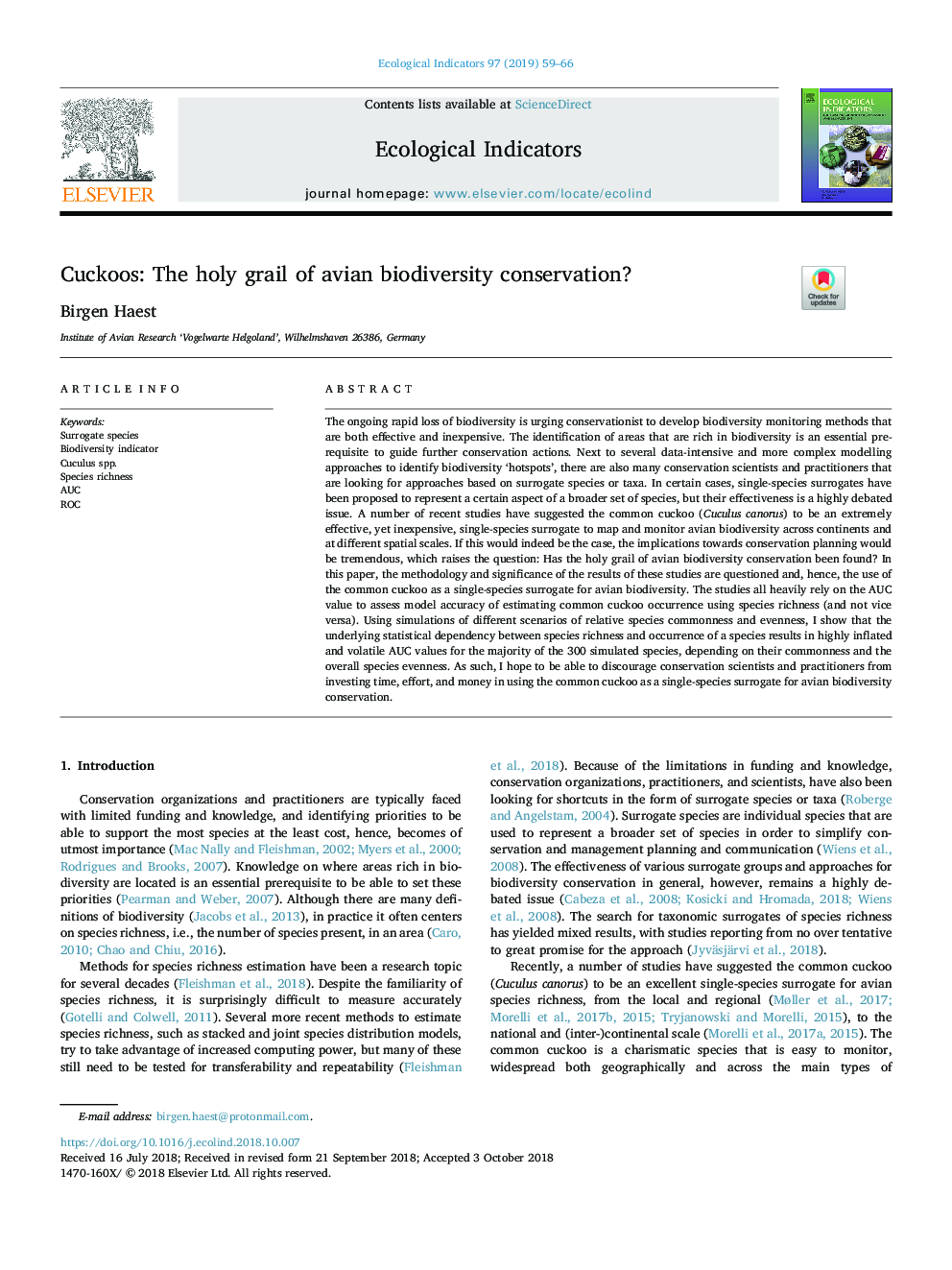| Article ID | Journal | Published Year | Pages | File Type |
|---|---|---|---|---|
| 11010268 | Ecological Indicators | 2019 | 8 Pages |
Abstract
The ongoing rapid loss of biodiversity is urging conservationist to develop biodiversity monitoring methods that are both effective and inexpensive. The identification of areas that are rich in biodiversity is an essential prerequisite to guide further conservation actions. Next to several data-intensive and more complex modelling approaches to identify biodiversity 'hotspots', there are also many conservation scientists and practitioners that are looking for approaches based on surrogate species or taxa. In certain cases, single-species surrogates have been proposed to represent a certain aspect of a broader set of species, but their effectiveness is a highly debated issue. A number of recent studies have suggested the common cuckoo (Cuculus canorus) to be an extremely effective, yet inexpensive, single-species surrogate to map and monitor avian biodiversity across continents and at different spatial scales. If this would indeed be the case, the implications towards conservation planning would be tremendous, which raises the question: Has the holy grail of avian biodiversity conservation been found? In this paper, the methodology and significance of the results of these studies are questioned and, hence, the use of the common cuckoo as a single-species surrogate for avian biodiversity. The studies all heavily rely on the AUC value to assess model accuracy of estimating common cuckoo occurrence using species richness (and not vice versa). Using simulations of different scenarios of relative species commonness and evenness, I show that the underlying statistical dependency between species richness and occurrence of a species results in highly inflated and volatile AUC values for the majority of the 300 simulated species, depending on their commonness and the overall species evenness. As such, I hope to be able to discourage conservation scientists and practitioners from investing time, effort, and money in using the common cuckoo as a single-species surrogate for avian biodiversity conservation.
Related Topics
Life Sciences
Agricultural and Biological Sciences
Ecology, Evolution, Behavior and Systematics
Authors
Birgen Haest,
